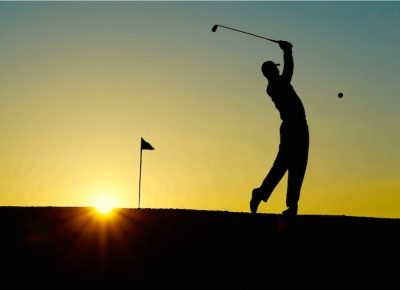Golfer’s Elbow and Tennis Elbow – Preventing Chronic Pain

Chronic and uncomfortable elbow pain is one of the most frequent ailments that golfers face and, as many of you may know, is referred to as golfer’s elbow and tennis elbow. Golfer’s elbow is the commonly used term for medial epicondylitis, which is excessive inflammation of the common flexor tendon. This flexor tendon attaches the muscles that flex the wrist and fingers to the medial epicondyle of the humerus. In addition to golfer’s elbow, lateral epicondylitis – or tennis elbow – can develop on the other side of the elbow and can cause serious chronic pain.
Golfer’s elbow and tennis elbow are very similar injuries. The difference between them come from which tendon is affected and where the pain resides. For golfer’s elbow, pain is felt in the flexor tendon on the pinky side of the elbow. For tennis elbow, pain is felt in the extensor tendon, which causes pain on the thumb side of the elbow.
Both injuries occur due to acute damage that does not heal properly, from chronic overuse, or a combination of both. The resulting symptoms include tenderness to touch and pain with movements such as gripping (shaking hands), twisting (opening a jar) and lifting objects (sometimes as light as a coffee mug!). This type of pain is also known to radiate down the forearm to the wrist, which can cause further issues. Additionally, the elbow may experience painful swelling.
The primary treatment for these injuries is the most hated word in all of sports, REST. Both injuries stem from the tendon not properly healing, often due to overuse. Therefore, rest provides the injured structures time to heal properly and fully. Treatments that can speed the recovery process are cortisone injections, oral anti-inflammatory medications such as ibuprofen or naproxen, and physical therapy. Chronic cases that fail initial treatments respond well to regenerative treatments such as prolotherapy and platelet rich plasma injections, which do not require surgery. Finally, there are often underlying issues with swing technique that need to be corrected to prevent recurrence of the injury, which can be addressed with a professional TPI screen.
Ultimately, rest is required to allow the tendons sufficient time to heal. However, medications, physical therapy, and injections can help speed recovery. Regenerative treatments can also provide a more rapid return to the links versus surgery. And as with most other sports injuries, correcting flaws in technique can help prevent pain from coming back.
Dr. Brian Sokalsky is the physician at the helm of Jersey Shore Sports Medicine in Somers Point and Lanoka Harbor, New Jersey. Dr. Brian is a board-certified family physician with special training in sports medicine and utilizes treatment options at the forefront of non-surgical healing, as well as holistic approaches, to treat his patients. Whether treating a star athlete who was injured on the field, getting a weekend warrior back into the game, or counseling a patient on medical weight loss, Dr. Brian is known to take the thoughtful, disciplined and customized approach that makes the difference. Serving as an active member of the community, Dr. Brian provides game coverage to local high school sports teams and club rugby teams. To find out more or to schedule an appointment, call (609) 904-2565 or visit jerseyshoresportsmedicine.com.
